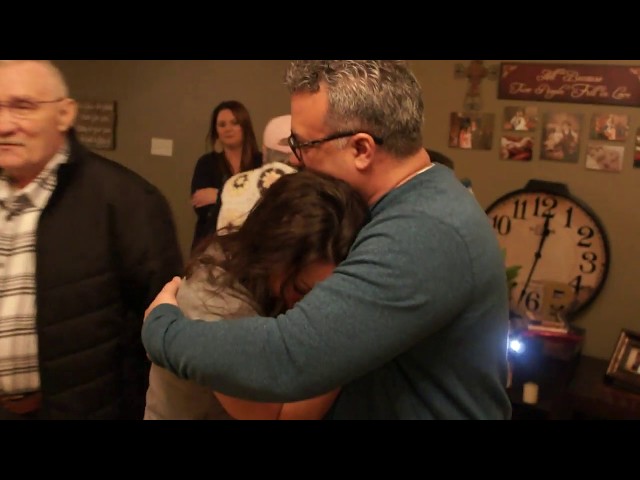No, Social services usually cannot secretly watch your house without legal permission. Their ability to monitor depends on the reason for their involvement, the severity of the concern, and local laws. While they can do home visits, talk to people who know you, and review records with permission, continuous covert surveillance without a court order is typically not allowed.
Moreover, you have the right to refuse entry during a home visit, but this might lead to more questions. The extent of their actions is guided by the nature of the case and the laws in your area. If you’re unsure, seeking legal advice is a good idea.
Social Work Home Visit Checklist

Client Information:
- Client’s Name:
- Date of Birth:
- Address:
- Phone Number:
- Emergency Contact Information:
Assessment:
Physical Health:
- Overall health condition
- Medications and adherence
- Any recent illnesses or injuries
Mental Health:
- Emotional well-being
- Any signs of depression or anxiety
- Suicidal thoughts or self-harm risks
Living Conditions:
- Cleanliness and safety of the home
- Adequate heating, cooling, and ventilation
- Structural safety concerns
Family and Support System:
- Family members present during the visit
- Availability of social support
- Any family conflicts or safety concerns
Basic Needs:
- Food supply and nutrition
- Access to clean water
- Adequate clothing and personal hygiene
Client’s Goals and Concerns:
- Client’s short-term and long-term goals
- Any immediate concerns or crises
- Client’s aspirations and hopes for the future
Safety Assessment:
- Assess any potential safety risks for the client or others
- Document any necessary interventions or referrals
Community Resources:
- Identify available community resources and services
- Discuss potential referrals or support systems
Client’s Feedback:
- Ask the client for their feedback on services received
- Address any questions or concerns they may have
Social Worker’s Recommendations:
- Develop an action plan based on the assessment
- Identify specific goals and objectives
- Specify follow-up actions and appointments.
What Social Services Can Do?
Social services play a crucial role in safeguarding children who may be at risk of harm or suffering in their current environment. When a referral is received, either from a family member, GP, teacher, or the police, social services investigate the child’s care situation. The Children Act 1989 outlines the scope of actions social services can take and provides guidelines for their interventions.
Starting Care Proceedings:
- If social services identify reasonable cause to suspect a risk to a child’s safety or well-being, they conduct a thorough assessment. If further action is deemed necessary, care proceedings may be initiated. These proceedings, lasting up to 26 weeks with multiple hearings, involve presenting assessment findings and recommending appropriate measures to the court. The court decides whether the child can remain with parents or should be placed in foster care.
Immediate Removal:
- If social services believe a child needs immediate removal from their current care, they have several options:
Emergency Protection Order (EPO):
- Social services can apply for an EPO under Section 44 of the Children Act 1989, granting protection for up to 8 days, with potential extensions. Notice is typically given, but in cases where harm may occur during this time, no notice is required.
Interim Care Order (ICO):
- Under Section 38 of the Children Act 1989, an application for an ICO can be made if there is a reasonable belief that the child has suffered or is at risk of significant harm. This order lasts until the final hearing of care proceedings, ensuring child protection during investigations.
Police Protection Order:
- Under Section 46 of the Children Act 1989, the police can, for up to 72 hours, remove a child from their home if there is a continued threat to the child. In such cases, applications for an Interim Care Order or Emergency Protection Order may follow to address ongoing safety concerns.
What Social Services Cannot Do?
Remove children without legal authority: Social workers generally cannot remove a child from their home without a court order, parental consent, or a police protection order. This underscores the importance of respecting due process and parental rights.
Solve systemic issues: They focus on individual and family interventions and cannot directly address broader societal problems such as poverty, unemployment, or discrimination. Collaborative efforts with other organizations are necessary to tackle root causes.
Provide all-encompassing solutions: Limited resources may prevent social services from fulfilling all individual needs, leading to waiting lists for certain services like housing or mental health care.
Force help upon individuals: Adults cannot be compelled to accept social services’ assistance unless there is a court order or an imminent risk of harm. This respects individual autonomy and freedom of choice.
Guarantee perfect outcomes: Despite best efforts, social services cannot ensure positive outcomes in every case due to complex circumstances and systemic factors.
Disclose confidential information: They are bound by client confidentiality, except in cases of imminent risk. This commitment fosters trust and encourages individuals to seek help.
Solve financial problems: While social services may offer temporary financial assistance, they cannot provide long-term solutions to financial challenges. Programs like debt management counseling and job training may be recommended.
Act as legal substitutes: They are not lawyers and cannot offer legal advice or representation. They can support individuals navigating legal systems but advise seeking legal counsel for specific matters.
Provide direct medical care: Lastly, they are not medical professionals and cannot diagnose or treat illnesses. They can facilitate access to healthcare services and offer practical support, but medical treatment requires qualified professionals.
Comprehensive Home Visit Assessment Checklist

Assessment of Safety and Hygiene:
Conducting a thorough evaluation of safety and hygiene during a home visit is paramount. The checklist should include criteria such as:
- Pest-Free Environment:
- Confirm that the client’s home is free from pests, including rodents, cockroaches, and other insect infestations.
- Verify that the living environment is not conducive to extreme weather conditions that could foster insect infestations.
- Ensure the premises promote a safe and healthy living space, free from pests.
Inspect for Potential Physical Hazards:
Vigilance for physical hazards, especially those posing risks to children, is essential. The checklist should cover:
- Trip Hazards:
- Identify objects or conditions that might cause individuals, particularly children, to trip or fall.
- Fall Hazards:
- Look for potential fall hazards, such as unstable furniture or objects that could topple over.
- Sharp Edges:
- Check furniture and items for sharp edges or protruding parts that could lead to injuries.
- Electrical Safety:
- Ensure there are no electrical hazards in the home, checking cords for signs of fraying or entanglement with objects.
By addressing these physical hazards, the goal is to create a safer living environment, particularly for children, and prevent accidents and injuries.
Document Household Members:
Dedicate a section within the checklist for recording the names of all family members present in the client’s residence. Additionally, engage in open conversations to gain insights into various aspects of their living situation:
- Living Arrangements:
- Understand how family members are distributed within the household and if there are specific arrangements or considerations.
- Support Systems:
- Inquire about the presence of extended family or other individuals providing support to the client and their family members.
- Relationship Dynamics:
- Explore family dynamics, including roles, responsibilities, and potential challenges or conflicts.
- Safety Concerns:
- Discuss any safety concerns related to the client’s family members, prioritizing their well-being.
Capture Abundant Photographs:
Photography serves as a valuable tool for comprehensive documentation during a home visit. It is essential to capture essential items such as food, clothing, and toys utilized by the clients. For example:
- Home Condition Documentation:
- Take detailed pictures documenting the overall condition of the home, highlighting areas requiring maintenance or repair.
- Clothing Inventory:
- Photograph the available clothing, focusing on wear and tear. Images of worn-out shoes, for instance, can indicate the need for new footwear within the family.
- Food Supplies:
- Document the contents of the refrigerator, pantry, or food storage areas to assess the adequacy of supplies and meet the family’s nutritional needs.
- Toy Collection:
- Capture images of household toys, noting their condition and suitability for the children’s age and development.
By taking abundant photographs, a visual record is created to more effectively assess and address the client’s living conditions and needs. These images offer valuable insights for planning and implementing appropriate support and interventions.
Pay Attention to Mental Health Indicators:
While physical well-being is a primary concern during a social worker home visit, it is equally crucial to be attentive to mental health indicators. Examples include:
- Signs of Depression:
- Watch for persistent feelings of sadness or a loss of interest in previously enjoyed activities.
- Social Isolation:
- Notice if the individual is withdrawing from social interactions or avoiding contact with friends and family.
- Changes in Behavior:
- Be vigilant for sudden or significant changes in behavior, such as increased irritability or difficulty concentrating.
- Expressed Emotional Pain:
- Take statements expressing emotional pain or despair seriously, engaging in compassionate conversations.
Open dialogue about counseling or therapy can provide valuable support for addressing emotional challenges professionally if needed. Prioritizing both physical and mental well-being ensures comprehensive care.
Assess the Adequacy of Support from Loved Ones:
Determining the level of support an individual receives from family and friends is crucial during a visit. Consider including the following questions:
- Emotional Support:
- Inquire about emotional support during difficult times or emotional distress.
- Practical Assistance:
- Assess practical help with day-to-day tasks, such as grocery shopping or transportation.
- Communication and Understanding:
- Gauge how well-loved ones understand mental health needs and concerns.
- Social Engagement:
- Explore their ability to engage in social activities or outings with family and friends.
- Overall Satisfaction:
- Seek overall satisfaction with the support received, using a scale for a more precise evaluation.
FAQ’s
Do social workers look around your house?
Social workers may assess home conditions during a visit. They seek consent to take photos for documentation and observe any unusual signs in the physical appearance of the home.
How do you keep social workers safe?
Social workers can stay safe by avoiding unpredictable environments, working with caution, recognizing warning signs during home visits, and maintaining control of situations.
Do I have to let social services look around my house?
If a protection order is granted, social services may enter your home. Complying with court orders, even if you disagree, is crucial to avoid legal issues.
What do social workers monitor?
Social workers monitor client progress and treatment effectiveness. Recording ensures accountability and may involve adherence to standards or regulations.
What are the risks of social work?
Social workers face daily safety risks, including physical harm and stress-related illness, as helping others often involves vulnerability.
How often do social workers do home visits?
The frequency varies based on the situation, with at least one visit to assess safety risks. Additional visits may follow to check progress or provide support.
Can social services tell you who reported you?
No, social services cannot disclose a reporter’s identity without permission. Confidentiality laws protect the privacy of all parties involved.
How long does it take for a social worker to do an assessment?
The length varies but typically takes one to three hours or longer, depending on the complexity. The assessment includes evaluating safety risks and living conditions.
Can social services look in my bedroom?
No, social services cannot enter your bedroom without permission. You have the right to set boundaries and communicate them during the visit.
Do social services watch your house?
Generally, no. Social services do not watch your home without permission. They may observe activities from outside to assess safety risks.
Do social services check your phone?
In most cases, no. Social services cannot check your phone without legal authorization. They may ask to borrow it briefly if evidence of neglect or abuse is present.
Final Words
Social services generally do not have the authority to monitor your house without legal permission continuously. The extent of their actions is influenced by factors such as their involvement, the severity of the perceived risk, available evidence, and local laws.
While they may employ various methods, including home visits and information gathering, continuous covert surveillance typically requires a court order. Although this decision may impact the investigation, it’s crucial to be aware of your rights, including the right to refuse entry during a home visit.
Moreover, understanding the legal framework governing social services in your region is essential for a clearer perspective on their monitoring capabilities. If there are concerns or uncertainties, seeking legal advice can provide clarification and guidance.











